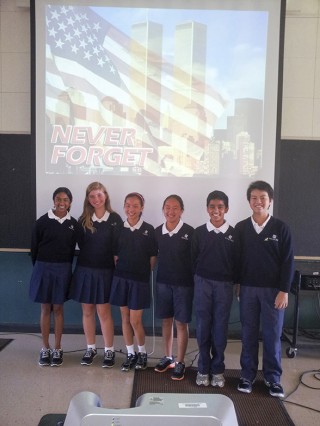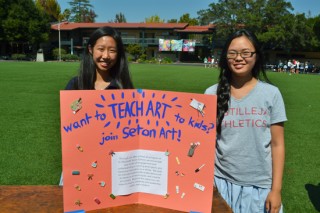“Walls turned sideways are bridges,” said Angela Davis in 1974. The 8th graders at LWGMS in Seattle engage in Walls to Bridges, a social justice curriculum that focuses on activism, leadership, and voice. Throughout their eighth grade year, students participate in monthly half-day workshops on issues like identity and ally-ship, as well as explorations of historical movements for social change and models of leadership and activism. This program, in conjunction with the social studies curriculum, gives students the time and space to examine privilege and oppression and to develop tools to become agents of change.
One way LWGMS 8th graders practice using their voices is by creating film as a call to action for LWGMS’s Annual Social Justice Film Festival. Students work in small groups to agree on a topic; generate a thesis; create a storyboard; integrate interviews, videos, and still photos; and edit a five-minute film that inspires its audience to act, to think, and to discuss important issues. The 2016 festival’s topics included race, gender, privilege, heteronormativism, stereotypes, ageism, ableism, homelessness, and mental health. These films were screened at a local movie theater, and in the local community. In recent years, the Seattle Police Department requested a copy of a student film called Black Lives on the Line, and this year, the student film on Islamophobia, All That Is Good, is being used in local government as part of diversity and empathy trainings.
As a leadership development program, Walls to Bridges serves as a forum for students to facilitate difficult discussions with the school community. After a group of girls made a film about implicit bias, Bias Beneath the Surface, members of the 8th grade class explored the Harvard implicit bias test with both students and teachers, and during an evening event on campus, the eighth graders led parents and other adults in a discussion about the impact of our biases on our decisions and perceptions.


